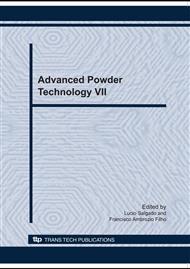p.229
p.235
p.243
p.249
p.253
p.259
p.267
p.273
p.279
Sulfur Dioxide Production from Phosphogypsum: Thermodynamic Analysis and Experimental Results
Abstract:
Phosphogypsum or chemical gypsum is a by-product generated in the manufacture of phosphoric acid, generated in the proportion of 4 to 6 tons for every ton of acid produced by the fertilizer industry. Its reuse is important from the economic, social and environmental point of view. The purpose of this paper is to investigate the thermodynamic condition of sulfur dioxide recovering from thermal decomposition of phosphogypsum. The main advantage of this process is to return the sulfur dioxide to sulfuric acid manufacturing. In this case, sulfur demand by fertilizer industry and phosphogypsum generation could be greatly reduced. Experimental results were obtained from a lab scale rotary kiln. Theoretical approach and experimental setup were validated by using the actual data from thermal decomposition of limestone. Theoretical and experimental results showed the thermal decomposition of phosphogypsum is thermodynamically feasible only at high temperatures.
Info:
Periodical:
Pages:
253-258
Citation:
Online since:
October 2010
Keywords:
Price:
Сopyright:
© 2010 Trans Tech Publications Ltd. All Rights Reserved
Share:
Citation:


